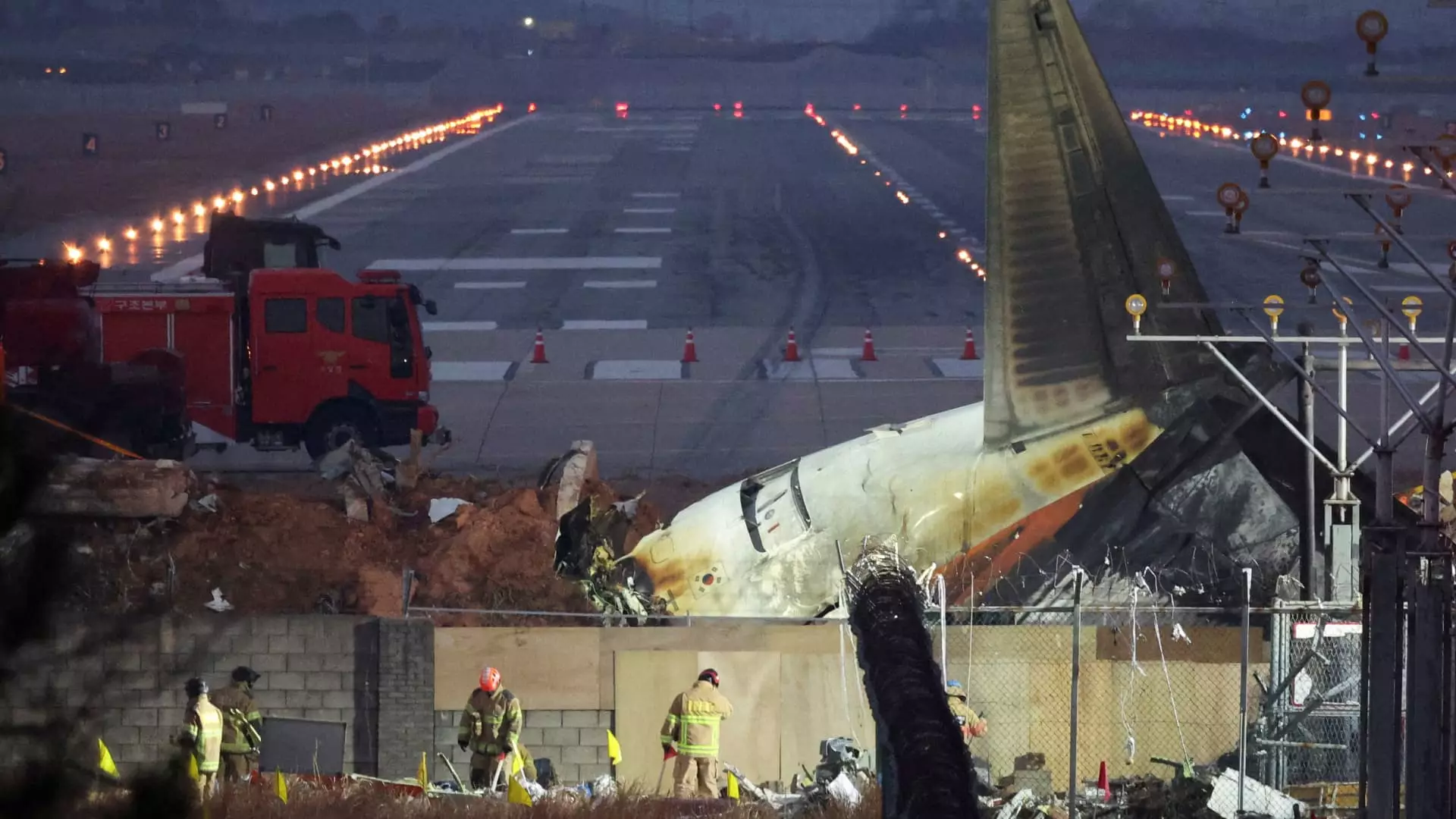The recent disaster involving Jeju Air Flight 7C2216 has raised significant concerns regarding airport safety regulations and runway design. On a fateful Sunday morning, a Boeing 737-800, after an overnight journey, failed to land safely, resulting in a catastrophic accident that claimed 179 lives, leaving only two survivors among the 181 passengers on board. This tragic event marked the deadliest aviation disaster in South Korea’s history and demands a rigorous investigation into the contributing factors that led to this heartbreaking loss of life.
Examining the Crash Sequence
In analyzing the situation, crucial questions arise surrounding the aircraft’s approach and landing conditions. Preliminary reports suggest that the plane landed without the necessary flaps and landing gear deployed, which typically serves as a critical defense against such emergencies. As the aircraft careened off-course during its approach, it collided with an unyielding mound of dirt and a concrete barrier positioned perilously beyond the runway’s end. Such obstacles undoubtedly exacerbated the severity of the incident, igniting flames upon impact and hindering the possibility of a safe stop. Todd Curtis, a veteran safety engineer, asserts that the concrete wall particularly complicated the aircraft’s deceleration, increasing the likelihood of fatal injuries among its occupants.
A deeper dive into possible environmental factors is necessary for a comprehensive understanding of the incident. Witness accounts and the initial reconnaissance may indicate that a bird strike could have compromised aircraft engine performance, leading to an uncontrollable descent. Investigators are reportedly focusing on the plane’s maintenance records, pilot schedules, and critical cockpit voice recordings to thoroughly assess whether human or mechanical error significantly influenced the chain of events.
The inadequacy of the barriers present at the airport raises essential questions about safety protocols in place at Muan International Airport and similar facilities across the nation. While the use of engineered materials designed to arrest runaway aircraft—such as the systems employed at LaGuardia Airport—has been validated, it appears that Muan’s concrete wall lacked frangibility, which may have prevented a worse catastrophe. Aviation experts suggest that had there been a more forgiving barrier in place, the tragic outcome may not have been as severe. Experts point to incidents where proper configurations have successfully mitigated damage and casualty rates, demonstrating the importance of accessible and effective safety measures.
Moving forward, it is imperative for aviation authorities to review and enhance stall prevention protocols and runway designs across South Korea and globally. This unfortunate accident should serve as a catalyst for reforming airport safety standards, ensuring that such dire consequences are not replicated. With the unwavering commitment to learning from past tragedies, air travel must continually adapt to safeguard lives, thereby working towards the day when air travel can be assumed as a risk-free venture. Only through rigorous investigation and proactive changes can we hope to restore public confidence in aviation safety.

